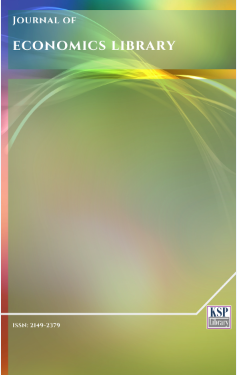Digital marketing and brand capital: IX9INE syndrome
Abstract
Abstract. The importance of socialmedia marketing is no longer to b eshown these days, it continues to attract the attention of researchers, specialists, and economic actors from all industries, because of its impactson all the extent of the earth. Social networks are real tools that are helping consumers’ to navigate their market. Thisisone of the reasons why specialists try to understand and to measure their impacts on the company's cosystem. This article is a response to the invitation of my dear colleagueand brother Civol Kane, to return by writing or in a videoon the model of the brand equity model, which I commented on following the publications of the fashion brand 6point9 on its social media Facebook. Thus, in order to alert about the risks that can often constitute messages with more or less sensitive content on socialnetworks, we will share this paper titled:"6POINT9" attention to the syndrome "6ix9ine".
Keywords. Digital Marketing; Brand equity; Luxury fashion brand; 6ix9in syndrome.
JEL. C51, C68, E02, F31, F41.
Keywords
References
Aaker, D.A. (1991). Managing Brand Equity: Capitalizing on the Value of a Brand Name. New York: Free Press.
Aaker, D.A. (1992). The value of brand equity. Journal of Business Strategy, 13(4), 27-32. doi. 10.1108/eb039503
Aaker, D.A. (1996). Measuring brand equity across products and markets. California Management Review, 38(3), 102-120. doi. 10.2307/41165845
Abrahamsen, A.G., & Hartmann, B.J. (2006). Online brand community in action. A constitutive netnography: Advancing a wholesome ethnomethodological perspective on brand community. Lund, Scania, Sweden: School of impact of social media marketing on brand equity: An empirical study on mobile service. Journal of Euromarketing, 18(2), 115-132.
Babac, R. (2011). Impact of social-media use on brand equity of magazine brands a qualitative study of vogue Turkey. M.Sc., Dissertation, 1-58. Halmstad, Sweden: Halmstad University.
Balakrishnan, B.K., Dahnil, M.I., & Yi, W.J. (2014). The impact of social media marketing medium toward purchase intention and brand loyalty among generation, Procedia - Social and Behavioral Sciences. 148, 177-185. doi. 10.1016/j.sbspro.2014.07.032
Bashar, A., Ahmad, I., & Wasiq, M. (2012). Effectiveness of social media as a marketing tool: an empirical study. International Journal of Marketing, Financial Services and Management Research, 1(11), 88-99.
Belaid, S., &Behi, A.T. (2011). The role of attachment in building consumer-brand relationships: an empirical investigation in the utilitarian consumption context. Journal of Product and Brand Management, 20(1), 37-47. doi. 10.1108/10610421111108003
Bressler, S.E., & Grantham Sr., C.E. (2000). Communities of Commerce: Building Internet Business Communities to Accelerate Growth, Minimize Risk, and Increase Customer Loyalty. New York: McGraw Hill.
Bruhn, M., Music Feelings Schoenmueller, V., and Schafer, D.B. (2012). Are social media replacing traditional media in terms of brand equity creation? Management Research Review, 35(9), 770-790. doi. 10.1108/01409171211255948
DOI: http://dx.doi.org/10.1453/jel.v8i2.2203
Refbacks
- There are currently no refbacks.
.......................................................................................................................................................................................................................................................................................................................................
Journal of Economics Library - J. Econ. Lib. - JEL - www.kspjournals.org
ISSN: 2149-2379
Editor: [email protected] Secretarial: [email protected] Istanbul - Turkey.
Copyright © KSP Library

